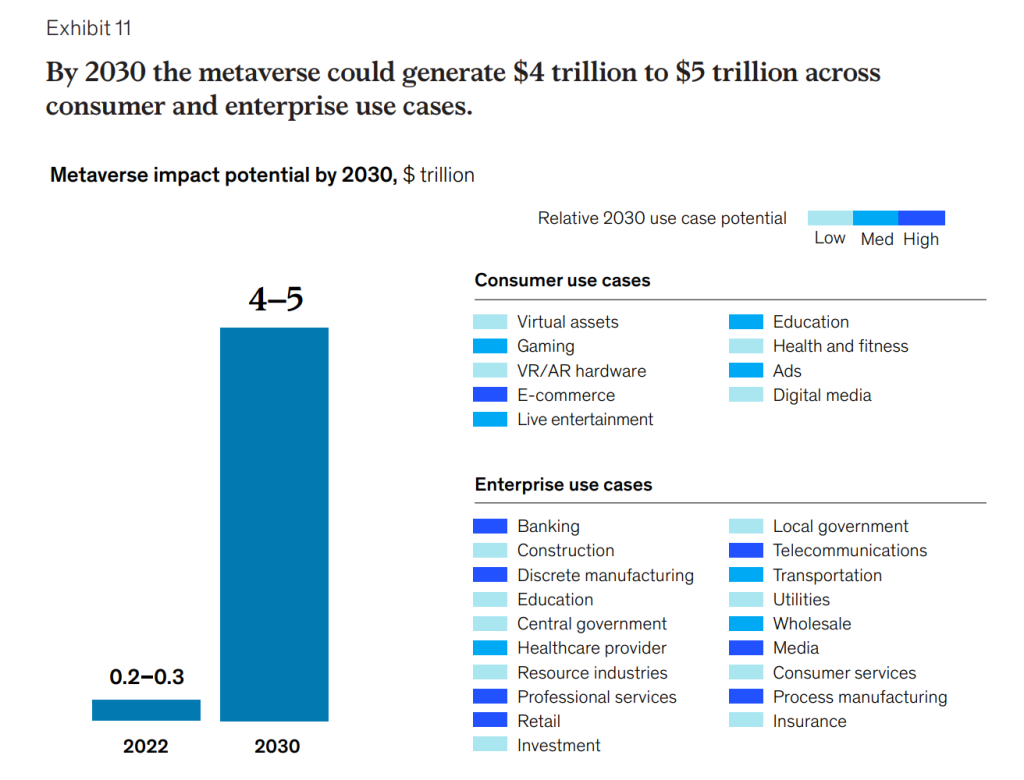While the 2022 bear market grazed off the excitement around the budding crypto sub-ecosystems such as nonfungible tokens (NFTs), the metaverse remains well-positioned for long-term disruption. Considering the myriad consumer and business-centric use cases the metaverse could cater to, a McKinsey & Company report highlights the technology’s potential to generate up to $5 trillion in value by 2030.
For the metaverse to reach its full potential, the report highlighted the need for four technology enablers — devices (augmented reality/virtual reality, sensors, haptics, and peripherals); interoperability and open standards; facilitating platforms; and development tools. However, the success of the metaverse is weighed by a greater focus on maximizing the human experience aimed at delivering positive experiences for consumers, end-users and citizens.

To date, metaverse initiatives around marketing, learning and virtual meetings have seen the highest adoption level across various industries. But a majority of initiatives around the metaverse have seen low to medium adoption, according to a survey of senior executives conducted by McKinsey in April.

“The metaverse is simply too big to be ignored,” the report says, highlighting the impact it couhave on commercial and personal lives. McKinsey estimated that over 50% of live events could be held in the metaverse by 2030, potentially generating up to $5 trillion in value.
Related: LG Electronics’ latest partnership seeks to bring interoperable metaverse platforms to TVs
The metaverse is also well positioned to host modern-day romantics, with one-third of surveyed singles showing interest in dating in the virtual world, according to a recent survey conducted by Dating.com. The online matchmaking platform said:
“With advancements in dating app technology and the metaverse, more daters are open to making connections that span different cities, countries and even continents.”
With metaverse in the picture, singles are open to dating people from different geographical locations.

